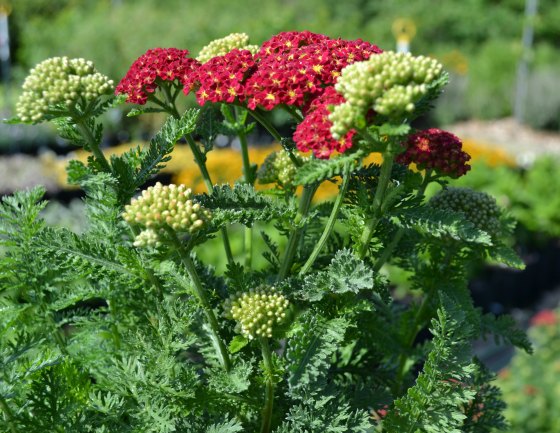
Growing Perennials from Seed is Easy.
Rule number one. Only grow perennials that are hardy in your zone. You can buy perennial seeds online, just make sure that you know what plant hardiness zone you are in and buy only seeds rated for your zone.
Zone map for the United States:
https://planthardiness.ars.usda.gov/
Zone map for Canada:
http://nlwis-snite1.agr.gc.ca/plant00/index.phtml
Rule number two. Do not start your seeds too soon, once they germinate they’ll need a good source of light. Grow lights or florescent lights are okay, but they are not a true substitute for natural sunlight. If your seeds germinate too soon you’ll find yourself in a situation of trying to keep them happy for too long. If they are light starved they’ll get tall, lanky and ugly.
Don’t be afraid to pinch or trim your perennial seedlings. Nobody wants a tall, lanky, but ugly perennial. The best perennials are nice and full at the bottom and spraying outwards from there.
At the top of this article there is a photo of summer flowering yarrow that I took at Mike’s Plant Farm here in Perry, Ohio. I bought that yarrow as a plug from a perennial grower. That’s a really important point, I’ll touch on that again in a second. We potted those plugs in May and by mid summer they were overflowing the pots and beautiful. But we should have trimmed them along the way to keep them a bit lower and fuller at the bottom because once they started blooming and a rain storm came along and flattened them all out.
After that we trimmed them all really hard in a matter of weeks they looked really good again. The lesson? We should have trimmed them at least once if not twice as they grew to keep them more compact along the way.
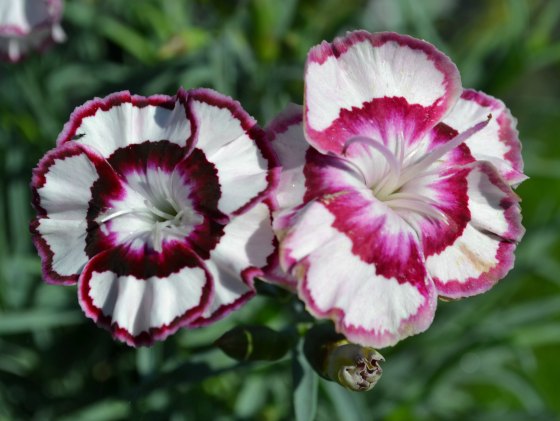
But an important point to note here is that even though I’m a grower and we root tens of thousands of cuttings at the nursery, I am not a seed grower and we buy in thousands and thousands of dollars worth of perennial plugs. Just one order alone of perennial plugs that I placed last year was over $4,000 and I’m a little, tiny grower!
Look for seeds that easy to grow, don’t bother with seeds that need stratification. Stratification is a process of subjecting seeds to certain conditions to mimick natural conditions in order to get them to germinate in a timely manner. Sometimes that soaking the seeds, sometimes it’s soaking them then storing them in the refrigerator for X number of days.
Research how to germinate a particular seed before you buy the seeds.
The growing medium that use to start your seeds can be store bought seed start mix. Just make sure it’s a higher quality brand that contains Perlite. You want the medium to be light and fluffy. It needs to drain well, not stay soggy all the time. The growing medium should be warm, room temperature is fine. Growers heat mats under the flat or tray does help to keep the medium warm but it also makes the medium dry out faster to stay on top of your watering.
It helps to cover the flat with plastic while you are waiting for the seeds to germinate. Most perennials seeds will take 3 to 5 weeks to germinate. Once they start germinating remove the plastic cover.
Once your perennials start to grow air flow and air circulation around the stems of the plants is important. A fungal disease known as damping off can set in if the conditions are damp and the air is not moving. Many growers place a fan nearby to push air across the seedlings. This helps a great deal, but check the moisture in your soil often. You can test the soil with your finger or buy a moisture meter. The soil should be damp or moist but never soggy.
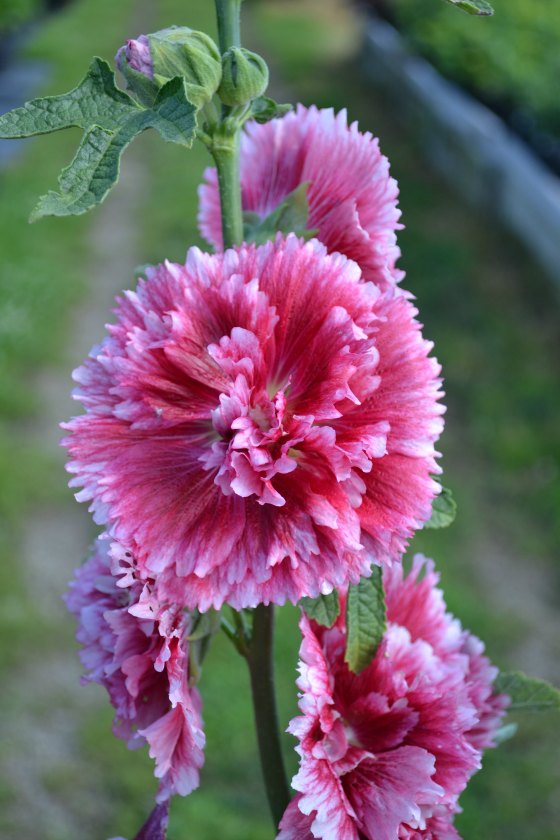
Time your perennial seed start date appropriately. Here in northern Ohio we really are not free of a late frost or freeze until mid May. So I wouldn’t want to move soft, tender, young perennials until that date of frost has past. So ideally, I’d want them fairly well established by that date so once moved outside they can withstand the sun, rain and wind. It takes on average 3 to 5 weeks for the seeds to germinate and another few weeks for them to grow out and harden off. Timing is important.
Once your seedlings start growing they’ll need plenty of light so plan on that. Light from a large window is good, grow lights are great, but many growers use florescent lights placed just a few inches above the plants. Many suggest using one warm color bulb and one cool color bulb in the fixture to mimic the light from commercial grow lights. The lights need to be as close as 2″ to 3″ above your seedlings. Make sure the light fixture is plugged into a GFI outlet!
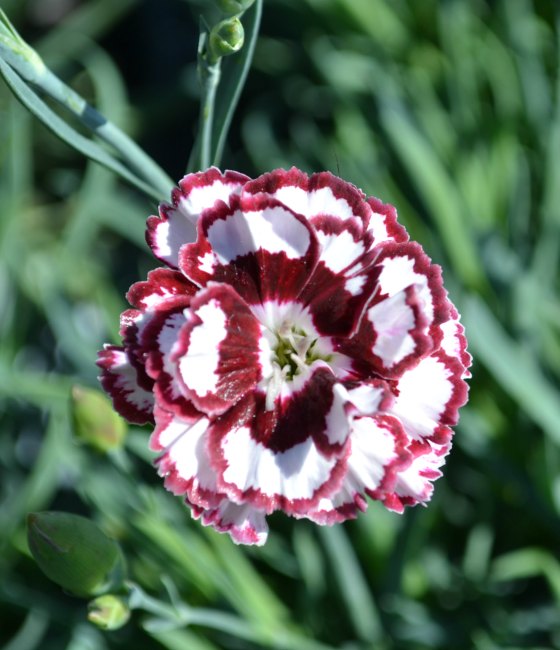
Fruit Punch ®, Coconut Punch Dianthus is protected plant, not something you are allowed to grow at home. When I bought these plugs I paid a royalty for each one that I bought and I also had to buy tags so the Trademark Name and Plant Patent Info is shown on the tag.
However, I tell Our Members all the time, there are all kinds of plants that are in the public domain that you are free to grow and sell.
It’s very common for growers to sow the seeds evenly in a flat, then as they germinate they pick them out when really small and transplant into a cell pack. You know, the kind that you buy annual flowers in. So you have one plant per cell, then when it’s time to plant or pot them they pop out of the cells nicely. You’ll want to move them when they are just a 1/2″ tall. Years ago I knew a grower who used to pick them out of the flat with the tip of an old fountain pen. Remember those?
You could sow directly in the cell pack, but not every seed is going to germinate and you’ll end up with holes all over your flat. Fill the cells all the way to the top with soil, air circulation. If you sow directly into the cell packs put at least 2 large seeds per cell and 4 to 6 small seeds per cell.
Some perennial seeds can take 8 to 10 weeks to germinate so research that ahead of time for each seed you want to grow.
Press the seeds down against the soil so you get good contact with the soil. If the seeds need dark to germinate then sprinkle an ever so fine layer of soil over them.
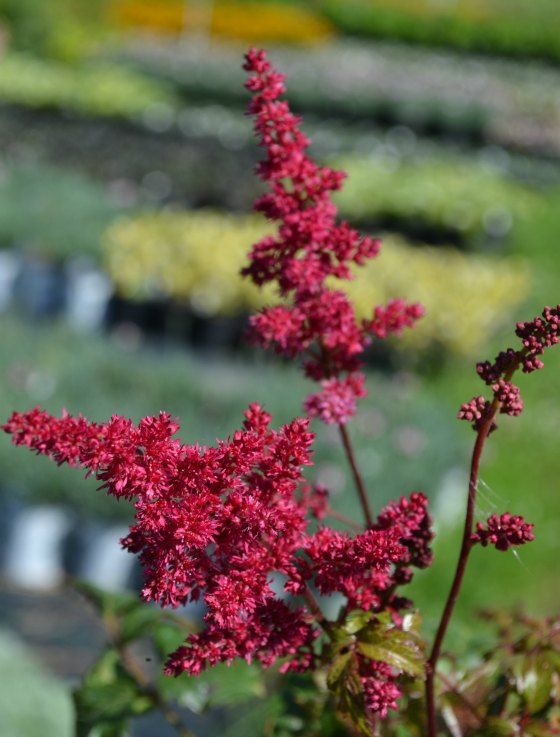
Once they start to grow make sure your grow lights are on for at least 12 hours per day.
You can use plastic domes. Remove the domes before the plants are hitting the top of the domes.
Once your seedlings have true leaves you can fertilize with miracle grow mixed at 25% of what is considered the normal rate.
Pinching the top buds as they grow, as they get a few inches tall helps a great deal to make your perennials nice and full and not tall and lanky.
Fungus gnats are common when growing plants indoors. The best way to keep them at bay is to allow the very top layer of the soil dry out between waterings. But not so much as to harm the plants.
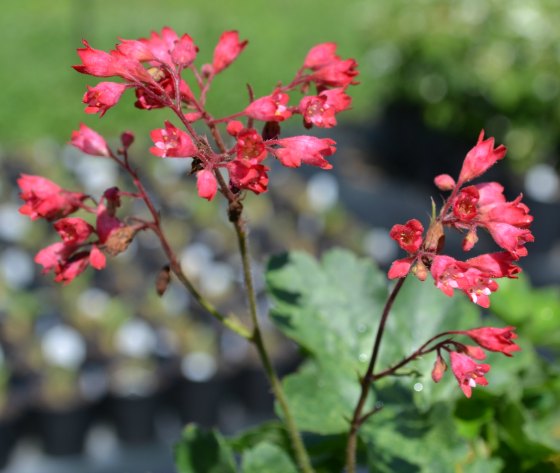
You need to harden off your plants before shoving them outside. No direct sun, no wind. Just some additional light and air.
2 to 3 hours the first day.
3 to 4 hours on day two.
Keep in mind, deep shade is more light than they are used to indoors under lights. Direct sun will kill them quickly.
4 to 5 hours on day 3.
One of our members from Wapwallopen, Pennsylvania has become our resident perennial growing expert and he took the time to write out detailed guides for Our Members to follow when growing growing perennials from seed. And of course he has also answered a million questions for the members as well. I took a lot of notes from his guides to write this article.
Thank you Paul Brace, from Brace Land Nursery!
Paul shot this video of his family sowing and caring for perennial seeds as well as the rest of his family nursery operation.
Questions, comments, mean things to say? Post them below and I’ll do my best to answer them for you.
We got some serious cold damage this year to our rhododendron. Zone 5-6, Cincinnati area. How and when should I prune it to remove the dead leaves and branches?
Mary,
Don’t be in a hurry. Let everything on the plant leaf out before you decide what to trim off. This is how you test to see if a plant, or a branch on a plant has died. Just scratch the bark of your plants with your finger nail. If the tissue below the bark is green and firm your plants are fine. If the tissue is brown and mushy that part of the plant is dead.
I was given some rose of Sharon seed and I planted them a week ago in a sunny window. My question is > I live in Fla. and would like to know is it to soon to plant them? If so what time of year do I plant the seeds. Thank you Mary Wilson
Mary,
Now is probably fine, but they’ll need lots of light once they come up.
question..my mock orange branches have become red ..previous brown..it may have been after i pruned some of them…is this normal …suckers or? thank u ENJOY your site..
Geri,
I wouldn’t be concerned, you really can’t do harm pruning things.
If you know how to stratify you can grow a lot more interesting plants. Then you are in the position to not sell the same as the big garden centres. It is not all that difficult to start seeds in autum, the difficult thing is to keep them watered while my cheapo tap timers freeze…..
Mike I seem to recall an article not long ago about creating a wired-in raspberry patch and was hoping you might refresh my memory as to the date of it’s posting? Thanks for all you do.
Mark,
I really can’t but the search function on http://mikesbackyardnursery.com/ is very good. Just type in what you are looking for.
I love the tips on perennial growing, and most of your posting, but how can you help us that have love for gardening since we are neither in America or uk. I am a nigerian. Thanks i anticipate response.
Samson,
The strategies that I teach can be used all over the world. The plants vary, but the techniques remain the same.
Hi Mike,
Love to read all the tips you give to us. Question–Can one pinch yarrow back like we do mums and it will stay compact? Mine tends to fall over. Thanks.
BJ,
Yes, by all means, cut them back before they start blooming, they’ll flush out with new growth and still bloom.
Hi Mike I have been buying your pots for several years. Could I get you to post this site again. I have lost this site and I need a few thousand. Thanks for your wisdom.
Verner,
We are no longer selling pots, it was just way too much work, we had to count them by hand. There are a lot of places where can get pots online. Greenhousemegastore is one source.
I joined your organization with a lifetime membership a few years ago. I really appreciate all the information you give. I started to learn about the rooting process from cuttings of forsythia plants from the information you share. Question, I use sand base to do the rooting process but some times they take and some time they don’t. Any suggestions?
Thanks Mike keep up the great work. Some day I want to attend one of your Open house Days.
RK
Ronald,
Softwood cuttings, http://mikesbackyardnursery.com/2015/01/easy-summertime-plant-propagation-techniques-can-home/, root very quickly, where hardwood cuttings, http://mikesbackyardnursery.com/2015/01/easy-winter-time-plant-propagation-can-home/, take much longer. The absolute easiest and fastest way to root cuttings is with this, http://mikesbackyardnursery.com/mikes-plant-propagation-kit/. You can root thousands of cuttings at a time. Love to see you at a shindig, we advertise these inside the members area. http://backyardgrowers.com/join
THANK YOU SO MUCH FOR THE TIPS, IM NOT ABLE TO GARDEN ANY MORE. BUT I STILL LOVE TO READ YOUR TIPS, KIDS ARE GETTING OLD TO, BE INTERESTED, I LIKE TO GIVE THEM YOUR TIPS TO GET THEM INTERESTED, TO MUCH ELECTRONIC FOR THEM TODAY, BUT I GUESS NECESSARY, I STILL TRY TO HAVE A HOUSEPLANT, ALWAYS DID LOTS OF CANNING WHAT WE RAISED, ALWAYS BEATS A SNOWBALL. THANK YOU FOR KEEPING ME ON YOUR INFO LIST,HAVE A GOOD SEASON GROWING,
HELEN BARCUS
Really appreciate all the valuable information you make available!!! Can you share your plug source? Thanks!
Chantel,
I only reveal wholesale sources inside the members area, http://backyardgrowers.com/join, should be accepting new members soon. Test drive is only $7.00.
It is good to see the children learning to work at an early age. Even the youngest can do something.
Love everything you do. You are living my dream life and inspiring me to just step into it. Thank you team Mike et al.
Thank you Kathy, I urge you to pursue your dream full speed ahead!
do you pinch the tops when they are still in the tray or after you have moved them to cells. and does each one need to be done individually or can you just trim off the tops with big shears all at one time.
Mary,
It really doesn’t matter, just do it as they need it. I often prune groups of plants with hedge shears, even my cuttings in the propagation beds get pruned with hedge shears which is far better than no pruning at all.
Thank you Mike for another Great article. I’ve been following you for over 8 years and using your advice as a guide. I’m a veggie gardener and love it. I’ve used your method for cuttings and pruning and for all sorts of gardening opportunities BUT I’ve never for starting perennials from seed. This is the year I’m starting my new dry shade perennials form seed. Thanks Mike! Keep up the GREAT work!
Thanks JR, good luck with the perennials!
My seedlings always seem to get lanky so I just plant them deep vs pinching off top. I do not know how much of the top to pinch. Just top leaves say 2 of the 4 leaves or what is the rule?
Glenda,
Pinching the tops is far better than planting anything too deep. There really is no rule, the sooner you clip them the sooner they fill out.
Light on the red end of the spectrum is important for growing plants indoors, but seedlings need more blue light, so two daylight fluorescents (4000°K or 5000°K) are fine for starting seeds.
Bottom watering can help prevent damping off.
Great information, thank Don.
I enjoy your information a lot! I keep seeing your member references, and would like to join, but get a message that it’s not open yet. Is there any way to join now so I can purchase from members? I think this group would be a great fit for me.
Susan,
Right now the only option is on this page I believe, http://mikesbackyardnursery.com/2015/10/backyard-nursery-tools-of-the-trade-things-to-turn-you-into-a-successful-grower/, regular membership and test drive open later this month???? Not sure if Duston put a date on the page or not. But it should be open around then, but it will only be open for a few days.